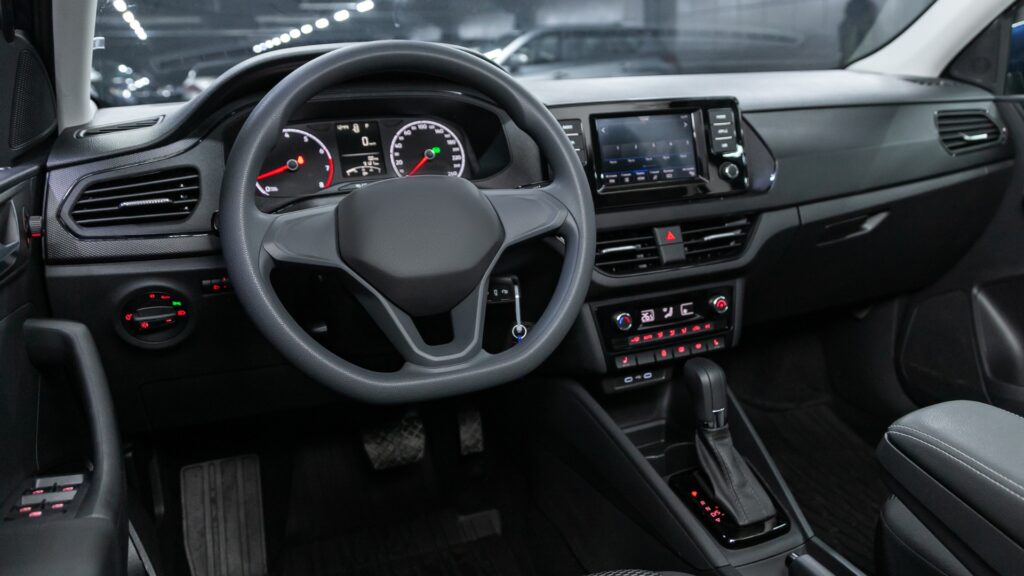In today’s fast-evolving digital age, ensuring the security of our vehicles is paramount. With the rise of advanced technologies, biometric authentication has emerged as a cutting-edge solution to enhance vehicle security. By incorporating biometric features such as fingerprint recognition, facial scanning, or voice authentication, car manufacturers are revolutionizing the way we protect our vehicles from unauthorized access.
As an expert in the field, I’ve witnessed firsthand the transformative impact of biometric authentication on bolstering vehicle security. Gone are the days of relying solely on traditional keys or key fobs; biometric authentication offers a more secure and convenient alternative. In this article, we’ll delve into the world of biometric security measures in vehicles, exploring how this innovative technology is reshaping the landscape of automotive security for the better.
Evolution of Vehicle Security
In the realm of vehicle security, advancements have reshaped traditional approaches, moving from keyed entry systems to sophisticated keyless solutions that offer enhanced protection and convenience.
From Keyed Entry to Keyless Systems
Initially, vehicles relied on keyed entry mechanisms, requiring physical keys to unlock and start the car. However, technological progress ushered in keyless systems that utilize advanced authentication methods like biometrics, enabling users to access and operate their vehicles seamlessly without the need for traditional keys.
Rise of Connected Vehicles
The rise of connected vehicles has further revolutionized security protocols, integrating biometric authentication with a range of smart features that enhance user experience and safety. By incorporating biometric identifiers such as fingerprints, facial recognition, or voice authentication, connected vehicles ensure personalized security that is robust, reliable, and tailored to individual drivers.
Understanding Biometric Authentication
How Biometrics Work
Biometrics work by identifying individuals based on their unique physical or behavioral characteristics. This process involves capturing biological data, such as fingerprints, facial features, or voice patterns, and converting them into digital templates for comparison and authentication. It’s a highly secure method as these biometric attributes are distinctive to each person, making it difficult for unauthorized users to gain access.
Types of Biometric Security Systems
There are various types of biometric security systems used in vehicle authentication. Some common examples include fingerprint recognition, which scans and matches fingerprints for access control, facial recognition, which verifies identity based on facial features, and voice authentication, which analyzes voice patterns for identification purposes. These systems offer diverse options for vehicle security, each with its strengths and applications in enhancing overall safety and protection.
Biometric Technologies in Vehicles
Biometric technologies play a crucial role in enhancing vehicle security by offering advanced authentication methods for access control. Let’s delve into how fingerprint recognition, facial recognition, and voice recognition are revolutionizing security measures in vehicles.
Fingerprint Recognition
Incorporating fingerprint recognition technology in vehicles allows for seamless and secure access control based on unique biometric patterns. By scanning and authenticating fingerprints, vehicles can ensure that only authorized individuals can unlock and start the engine, adding an extra layer of security that is difficult to duplicate or forge.
Facial Recognition
Facial recognition systems in vehicles provide a sophisticated way to identify and authenticate drivers. By analyzing facial features such as the geometry of the face, vehicles can grant access to authorized users automatically. This technology enhances convenience and security, as it eliminates the need for traditional keys or key fobs, reducing the risk of unauthorized access to the vehicle.
Voice Recognition
Voice recognition technology enables hands-free interaction with vehicle systems while also enhancing security. By using voice commands for tasks such as unlocking doors or starting the engine, drivers can conveniently access their vehicles without compromising on safety. Voice recognition adds a personalized touch to vehicle security, as each individual’s voice is unique, making it a reliable authentication method.
Advantages of Biometric Authentication in Vehicle Security
Biometric authentication in vehicle security offers several advantages that significantly enhance both security features and user convenience.
- Increased Security Features
Biometric authentication provides enhanced security features by utilizing unique biometric identifiers such as fingerprints, facial characteristics, and voice patterns. These personalized authentication methods offer a higher level of security compared to traditional key-based systems. For example, fingerprint recognition ensures secure access control by verifying the driver’s identity based on their unique fingerprint patterns, making it difficult for unauthorized individuals to gain access to the vehicle. Likewise, facial recognition technology accurately identifies and authenticates authorized users based on facial features, adding an additional layer of security to vehicle access. - User Convenience
In addition to improved security, biometric authentication also enhances user convenience. Technologies like fingerprint recognition, facial scanning, and voice authentication offer a seamless and user-friendly experience. For instance, with fingerprint recognition, drivers can effortlessly unlock their vehicles without the need for physical keys or cumbersome key fobs. Similarly, facial recognition systems eliminate the hassle of manual authentication processes, allowing users to access their vehicles quickly and conveniently. Voice authentication not only provides a hands-free interaction with the vehicle but also ensures a smoother and more convenient user experience.
Challenges and Privacy Concerns
Data Security Risks
Ensuring robust data security protocols is paramount when implementing biometric authentication in vehicles. Biometric data, such as fingerprints and facial features, must be securely stored and encrypted to prevent unauthorized access. In the event of a cyber-attack, there is a risk of biometric information being compromised, leading to identity theft or unauthorized access to the vehicle. It’s crucial to continuously update security measures to mitigate these risks and safeguard sensitive biometric data from potential breaches.
Handling Privacy and Compliance Issues
Addressing privacy concerns and regulatory compliance is essential in the deployment of biometric authentication systems in vehicles. Collecting and storing biometric data raises privacy questions regarding data ownership, consent, and usage. Manufacturers must adhere to data protection laws and frameworks to ensure transparency and accountability in handling biometric information. Implementing clear privacy policies, obtaining user consent, and regularly auditing data practices are vital steps to maintain trust and compliance with privacy regulations. Maintaining a balance between enhanced security and protecting user privacy is key in the successful integration of biometric authentication technology in vehicles.
Future Insights
Emerging Trends in Vehicle Biometrics
Exploring future trends in vehicle biometrics reveals a shift towards more sophisticated authentication methods. As technology advances, we can expect biometric systems in vehicles to incorporate multi-factor authentication, combining different biometric modalities for enhanced security. This trend aligns with the growing emphasis on seamless and secure user experiences in connected vehicles.
Integration with Other Secure Technologies
In the future, the integration of biometric authentication in vehicles will likely extend to synergies with other secure technologies such as blockchain and artificial intelligence. This integration could introduce innovative security protocols that leverage decentralized storage and advanced algorithms to provide airtight protection for biometric data. Collaborations between biometric authentication and these technologies hold the potential to create a robust security ecosystem in automotive systems.




